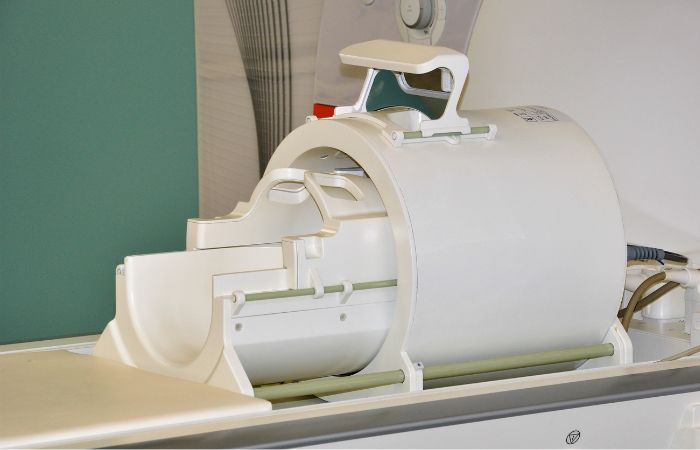New Study with Living Laboratory Head Coil Marks Step Forward for 7T MRI Imaging
Published: 5 December 2024
A new publication in the Magnetic Resonance in Medicine Journal, joint first-authored by Dr Belinda Ding and Dr Sydney Williams, showcases the use of our radiofrequency (RF) head coil in advancing 7T MRI imaging.
A new publication in the Magnetic Resonance in Medicine Journal, joint first-authored by Dr Belinda Ding and Dr Sydney Williams, showcases the use of our radiofrequency (RF) head coil in advancing 7T MRI imaging.
In the study, the RF head coil was used to investigate the repeatability of combining multishot diffusion-weighted imaging (DWI) and parallel RF transmission (pTx) at 7T within and across multiple scan sessions.
Parallel transmission (pTx) is a cutting-edge technique designed to correct issues like signal brightening and dropouts in 7T MRI. Multishot MRI sequences, on the other hand, help overcome image distortion and blurring in diffusion-weighted imaging (DWI).
The Living Laboratory’s custom-built pTx RF head coil, equipped with eight transmit and thirty-two receive channels, was used on seven healthy volunteers twice on the same day. The research showed that pTx dramatically improved the signal uniformity of DWI, especially in the lower brain regions, as compared to normal procedures. By combining pTx and multishot DWI at 7T, the overall quality of the images was enhanced with increased consistency between sessions.
The study marks another step forward in improving the quality and repeatability of 7T imaging, underscoring the impact of the collaboration between the Living Laboratory, NHS Greater Glasgow & Clyde, Siemens Healthineers and MR CoilTech in developing these advanced coils.
The head coil is the first of a series of body-part-specific 7T MRI coils that are being constructed and validated as part of the Living Laboratory’s Coil Development project. A neurovascular coil has also been constructed and is undergoing clinical validation, while coils for pelvic and spinal imaging are also in the pipeline. The enhanced imaging power generated by these new coils will ultimately extend the utility of 7T MRI for diagnosing and monitoring a wide range of diseases.
First published: 5 December 2024
<< News


